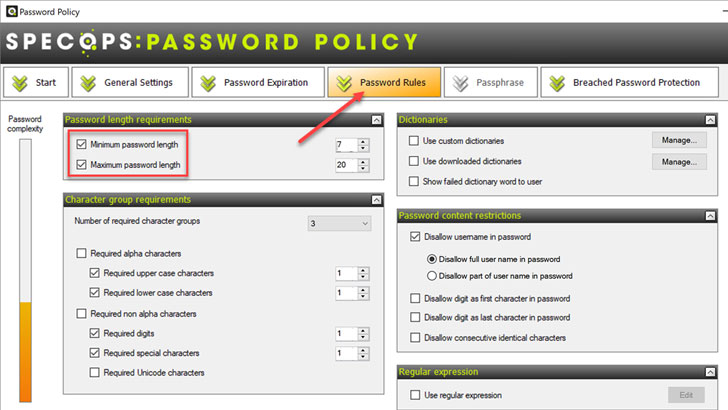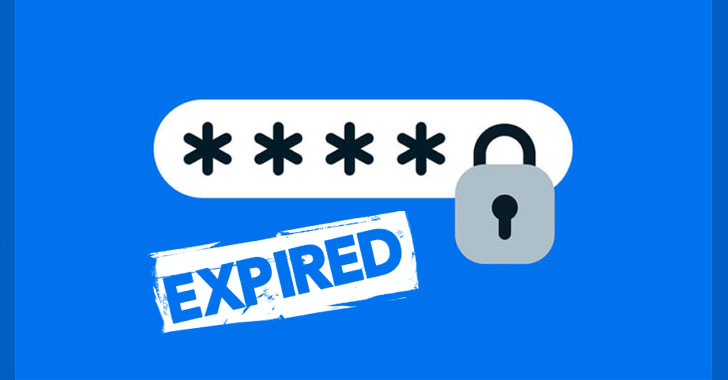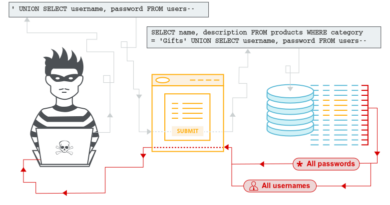How to Use Password Length to Set Best Password Expiration Policy
Password Length One of the many features of an Active Directory Password Policy is the maximum password age.
Traditional Active Directory environments have long using password aging as a means to bolster password security.
Native password aging in the default Active Directory Password Policy is relatively limited in configuration settings.
Let’s take a look at a few best practices that have changed in regards to password aging.
What controls can you enforce in regards to password aging using the default Active Directory Password Policy?
Are there better tools that organizations can use regarding controlling the maximum password age for Active Directory user accounts?
What password aging best practices have changed? Password Length
Password aging for Active Directory user accounts has long been a controversial topic in security best practices.
While many organizations still apply more traditional password aging rules, noted security organizations have provided updated password aging guidance.
Microsoft has said that they are dropping the password-expiration policies from the Security baseline for Windows 10 v1903 and Windows Server v1903.
The National Institute of Standards and Technology (NIST) has long offered a cybersecurity framework and security best practice recommendations.
As updated in SP 800-63B Section 5.1.1.2 of the Digital Identity Guidelines – Authentication and Lifecycle Management, note the following guidance:
“Verifiers SHOULD NOT require memorized secrets to be changed arbitrarily (e.g., periodically). However, verifiers SHALL force a change if there is evidence of compromise of the authenticator.” NIST helps to explain the guidance change in their FAQ page covering the Digital Identity Guidelines.
It states: “Users tend to choose weaker memorized secrets when they know that they will have to change them in the near future.
When those changes do occur, they often select a secret that is similar to their old memorized secret by applying a set of common transformations such as increasing a number in the password.
This practice provides a false sense of security if any of the previous secrets has been compromised since attackers can apply these same common transformations.
But if there is evidence that the memorized secret has been compromised, such as by a breach of the verifier’s hashed password database or observed fraudulent activity, subscribers should be required to change their memorized secrets.
However, this event-based change should occur rarely, so that they are less motivated to choose a weak secret with the knowledge that it will only be used for a limited period of time.”
With the new guidance from the above organizations and many others, security experts acknowledge that password aging, at least in itself, is not necessarily a good strategy to prevent the compromise of passwords in the environment.
The recent changes in password aging guidance also apply to traditional Microsoft Active Directory Password Policies.
Directory Password Policy Password Aging Password Length
The capabilities of the password change policies in default Active Directory Password Policies are limited. You can configure the maximum password age, and that is all. By default, Active Directory includes the following Password Policy settings:
- Enforce password history
- Maximum password age
- Minimum password age
- Minimum password length
- Minimum password length audit
- Password must meet complexity requirements
- Store passwords using reversible encryption
When you double click the maximum password age, you can configure the maximum number of days a user can use the same password.
When you look at the explanation given for the password age, you will see the following in the Group Policy setting:
“This security setting determines the period of time (in days) that a password can be used before the system requires the user to change it.
You can set passwords to expire after a number of days between 1 and 999, or you can specify that passwords never expire by setting the number of days to 0.
If the maximum password age is between 1 and 999 days, the minimum password age must be less than the maximum password age.
If the maximum password age is set to 0, the minimum password age can be any value between 0 and 998 days.”
 |
| Defining the maximum password age with Active Directory Password Policy |
With the default policy setting, you really can either turn the policy on or off and then set the number of days before the user password expires.
What if you had further options to control the maximum password age and set different values based on the password complexity?
Specops Length Based Password Policy
As mentioned, recent guidance from many cybersecurity best practice authorities recommends against forced password changes and details the reasons for this change.
However, many organizations may still leverage password aging as a part of their overall password security strategy to protect against user passwords falling into the wrong hands. What if IT admins had features in addition to what is provided by Active Directory?
Specops Password Policy provides many additional features when compared to the default Active Directory Password Policy settings, including password expiration.
One of the options contained in the Specops Password Policy is called “Length based password aging.
Using this setting, organizations can define different “levels” of password expiration based on the user password’s length.
It allows much more granularity in how organizations configure password aging in an Active Directory environment compared to using the default Active Directory Password Policy configuration settings.
It also allows targeting the weakest passwords in the environment and forcing these to age out the quickest.
You will note in the screenshot. The length-based password aging in Specops Password Policy is highly configurable.
It includes the following settings:
- Number of expiration levels – Enter how many expiration levels there will be.
- An expiration level determines how many extra days the user will have until their password expires and they are required to change it.
- This depends on how long the user’s password is. To increase the number of levels, move the slider to the right. The maximum number of expiration levels that can exist is 5.
- Characters per level – The number of additional characters per level that define the extra days in password expiration
- Extra days per level – How many additional expiration days each level is worth.
- Disable expiration for the last level – Passwords that meet the requirements for the final expiration level in the list will not expire.
 |
| Configuring the Length based password policy in Specops Password Policy |
Specops allows easily notifying end-users when their password is close to expiring.
It will inform end-users at login or by way of sending an email notification. You can configure the days before expiration value for each of these settings.
 |
| Configuring password expiration notifications in Specops Password Policy |
Organizations define the minimum and maximum password length configurations in the Password Rules area of the Specops Password Policy configuration.
If you change the minimum and maximum password length configuration, the password length values in each level of the length-based password expiration will change as well.
 |
| Configuring the minimum and maximum password length |
Combined with other Specops Password Policy features,
such as breached password protection, the length-based password expiration strengthens enterprise password policies for both on-premises and remote workers.
Wrapping Up
Password aging has long been a feature of Active Directory Password Policies in most enterprise environments.
However, as attackers get better at compromising passwords, new security best practice guidance is no longer recommending organizations make use of standard password aging.
Specops Password Policy provides compelling password aging capabilities that allow extending password aging features compared to default Active Directory Password Policies.
By adding expiration levels, Specops Password Policy allows effectively targeting weak passwords in the environment by quickly aging these passwords out.
End-users can use strong passwords much longer.
Organizations can even decide never to expire specific passwords that meet the defined password length.
Using Specops Password Policy features, including length-based password expiration, helps to ensure more robust password security in the environment. Click here to learn more.
New Evidence Suggests SolarWinds Codebase Was Hacked to inject Backdoor



